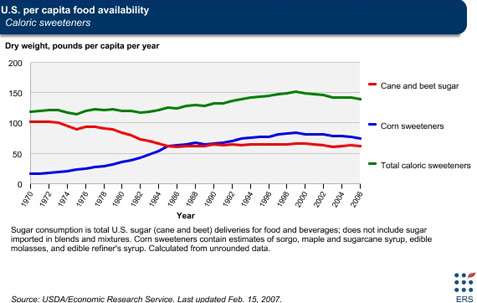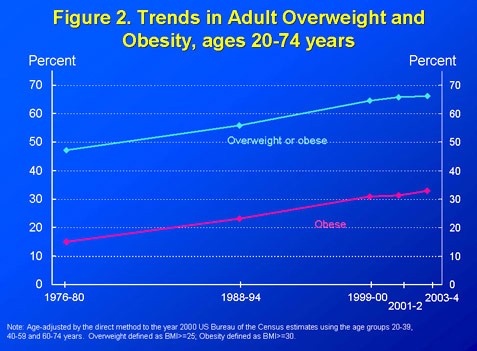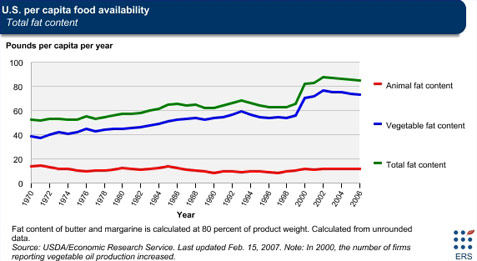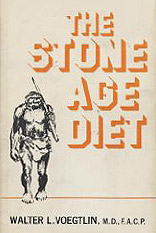
05/20/2009
Furci Home / Fitness Channel / Bullz-Eye Home
You hear some experts claiming it's because we eat too much and exercise too little. Some claim they have found a fat gene. And a few others are even claiming obesity may be contagious. Overall, there are a variety of factors that play a role in people becoming overweight, obese and unhealthy. This is what makes getting lean(er) and healthier, such a complex issue to fix. Or is it?
Now, I think it's indisputably obvious, that if you are a chronic overeater and sit on your duff all day, weight gain, obesity and dire health will be your fate. Over-consumption of food, especially the wrong food, coupled with inactivity will definitely increase your chances of being overweight and acquiring the inherent health risks. And, there are those who are genetically predisposed to gaining weight easier than others. However, studies show very few obese people have been found to posses mutated genes. Also, according to some scientists, isolating a fat virus has promise in helping to solve the obesity epidemic. However, not all scientists agree that a virus, related to the common cold, has anything to do with the extraordinary rate at which Americans have gained weight. To put it quite simply, very few people have a weight problem directly attributed to a virus.

Chronic overeating and inactivity are definitely on the pathway to an obese, unhealthy life. But are we as a nation really eating that much more? According to surveys conducted in 1977 to 1978 and 1994 to 1996, reported daily caloric intake increased from 2,239 calories to 2,455 calories in men, and from 1,534 calories to 1,646 calories in women (1). Are these really enough calories to cause such massive decreases in the health of so many people? I don't think so. There is one factor, however, that I believe is responsible for the greatest portion of the unhealthy state of our union. It's not necessarily how much we're eating, genetics or even a virus: It's what we're eating.
If a calorie is a calorie is a calorie, as most dieticians, nutritionists and doctors claim, why doesn't the percent of increased caloric intake match the percentage of increase in overweight or obese individuals? The increase in calorie consumption in men and women has increased 7 percent and 9 percent respectively since the seventies. The increase in the percentage of individuals who are overweight or obese has increased almost 20 percent in each category. And remember, this increase literally occurred in less than 30 years, which is less than a generation. Why such a discrepancy between calories consumed and weight gained? Because there's more to this epidemic than the amount of calories people are consuming.
The food processing industry has dropped the ball when it comes to supplying healthy food for our consumption. It is blatantly obvious by the ingredients listed on food labels, coupled with the downward spiral of ill health in the U.S., that the food industry is obsessed with increasing its bottom line with no regard for the negative effects of its products. It would be naive to assume that this billion-dollar industry has the best intentions for our food's safety and nutritive value.
Now don't get me wrong, I am not trying to make excuses for people who overeat and don't exercise. I know that the vast majority of overweight individuals eat excessive calories. But the numbers just don't add up.
On the other hand, the obesity epidemic and its related afflictions do have a linear relationship to the amount of denatured, devitalized, processed food people consume, especially simple sugars and vegetable oil.

The incidence of overweight and obese individuals, shown by the National Health and Nutrition Examination Surveys (NHANES) (Fig. 2, below), has a linear relationship to fructose consumption in the United States (Fig. 1). According to the USDA's data below (Table 1), total sugar and fructose consumption started to increase sharply in 1985, and reached a peak in 1999, which is congruent with the incidence of obesity. During 2000 through 2005 we see a slight drop in total sugar and fructose consumption, which is consistent with the leveling off of obesity rates during that same period. This drop in sugar adds up to 10 pounds of total sugar, with fructose contributing six of those pounds.
Even more compelling, the USDA's data in Table1 below reveals total sugar consumption from 1970 to 1999 increased 26 percent, which at first glance doesn't seem like much. Also note that from 1970 to 1983 total sugar consumption did not increase, while obesity rates did. This would lead one to infer that sugar is not a major contributing factor to our expanding waistlines. However, take another look. While total sugar consumption did not increase from 1970 to 1983, fructose consumption tripled. Moreover, between 1970 and 1999, with only a 26 percent increase in total sugar consumption, fructose consumption increased 425 percent.
USDA Economic Research Service:
Table 1. United States Sugar (caloric sweetener) Consumption.
| Year | Total sugar in lbs | Fructose in lbs and % of total |
| 2007 | 136.3 | 72.9 or 53.5% |
| 2006 | 138.9 | 75.0 or 53.9% |
| 2005 | 141.6 | 77.4 or 54.6% |
| 2000 | 148.8 | 81.8 or 54.9% |
| 1999 | 151.2 | 83.5 or 55.2% |
| 1995 | 144.1 | 77.9 or 54% |
| 1990 | 132.4 | 66.8 or 50.4% |
| 1985 | 126.2 | 62.2 or 49.3% |
| 1983 | 119.3 | 47.6 or 39.9% |
| 1982 | 117.7 | 42.7 or 36.3% |
| 1980 | 120.2 | 35.3 or 29.3% |
| 1978 | 121.3 | 28.4 or 23.4% |
| 1976 | 119.9 | 25.2 or 21.0% |
| 1974 | 117.9 | 21.2 or 17.9% |
| 1972 | 121.5 | 17.8 or 14.7% |
| 1970 | 119.1 | 15.9 or 13.3% |
Fig. 1. Sugar, HFCS, total sweetener 1970 - 2006. (Courtesy of ERS/USDA Data)

Fig. 2. Obesity trends. (Courtesy of CDC.gov)

In figure 3 (below), take note that while animal fat consumption has decreased, we've seen a simultaneous increase in total fat consumption that closely mirrors the obesity trend. Also note, the increase in total fat consumption is due to vegetable oil, which is used for frying, spreads, dressings, etc.
Fig. 3. Oils and fats chart. (Courtesy of ERS/USDA Data)

To understand just how far off the beaten path we've gotten from eating the proper foods vital to our health, we must take a look at what we used to eat prior to the obesity and cardiovascular disease (CVD) epidemic. Some researchers have tried to illuminate all the way back to when we were hunter-gatherers.
Unfortunately, because of the limited evidence, there's a limitless amount of conjecture having to do with the foods our Stone Age ancestors consumed. However, the one factor agreed upon regarding the Stone Age caveman's diet, is that it was full of whole, natural, nutrient-dense foods. Products like vegetable oil and high fructose corn syrup weren't manufactured yet, and sugar was very limited to fruit.
Be that as it may, there are vastly different points of view when discussing the Stone Age diet. The low-fat politically correct (PC) school of thought is that Stone Age man ate small amounts of lean meat with copious amounts of plant foods. The high-fat school of thought is that Stone Age man placed prime importance on fatty animals first, with plant foods comprising a small percentage of their diet (2).

Dr. Walter Voegtlin takes a vastly different approach to deciding what foods the cavemen consumed. In his book, "The Stone Age Diet," he makes an argument for the higher fat, high-meat diet by comparing the anatomy and physiology of man to that of herbivorous sheep and a carnivorous dog. Dr. Voegtlin argues that broad differences in anatomy between man and herbivores are evidence that man did not live on a diet high in plant foods, especially those rich in carbohydrates (3).
Humans are carnivorous animals and the Stone Age diet, Dr Voegtlin challenges, was primarily one of a meat and fat eater. Like the carnivorous dog, our jaw moves in a vertical motion. A herbivores' jaw moves in a rotary fashion. We have canine teeth, ridged molars and incisors designed for crushing and tearing. Unlike herbivores that lack canines and have flat molars, mastication is unnecessary and we do not ruminate or chew cud. Our stomachs hold two quarts, empty in about three hours, secrete hydrochloric acid, lack bacteria and cannot digest cellulose. A herbivorous sheep's stomach holds eight and a half gallons, never empties, digests cellulose, and bacteria are vital to its function. A herbivore's stomach doesn't secrete hydrochloric acid, which is primarily for the digestion of protein. Carnivores like man feed intermittently while herbivores continuously feed (graze). A herbivore's digestive tract is five times the size of man's relative to our body size. Unlike herbivores, man's colons are short and our rectums are small and do not contribute to digestion. Man's gall bladder has a vital function and is well developed. The function of a herbivore's gall bladder is weak or nonexistent because of the lack of fat in their diet. The volume of feces from man is small because our digestive efficiency borders on 100 percent. A herbivore's feces are voluminous because their digestive efficiency is less than or equal to 50 percent, and they must eat large quantities of food.
Stone Age man, out of necessity, ate food that were very nutrient and energy dense. Humans, in the Stone Age, by shear lack of availability, could not have consumed a great deal of carbohydrates. Stone Age men couldn't just walk outside the cave every morning and harvest what they desired for the day. They harvested what was available. Fruit wasn't and isn't readily available in the wilderness. And when it is, it's seasonal. It's hard for us to imagine the hard life they led, but a PC diet of mostly fruits, grasses, vegetables and some lean meat just wouldn't cut it in the harsh environment of early man.

A recurring premise among anthropologists and explorers is that Stone Age man had an extensive diet with a wide range of foods. Evidence seems to indicate that hunter-gatherers didn't just eat a PC diet of mainly foraged roots and fruit and some lean meat. Did they eat a diet centered on large animals with a small amount of plant foods thrown in for good measure? The Stone Age diet varied from region to region and sometimes accommodated changes within a region like famine and drought. Being resilient and adapting to the ever-changing environment is the reason Stone Age man survived for millions of years before agriculture. To put it simply, they lived in conjunction with their environment using what resources were available.
It wasn't until about 10,000 years ago that man started agriculture, which is literally a blink of an eye in time. This is not nearly enough time to physiologically change the way our bodies process food. The Agricultural Revolution, which saw massive increases in agricultural productivity between 1750 and early 1900, is responsible for the vast majority of today's disease. It is evident that agriculture and human health have an inverse relationship. As people around the world have consumed more refined carbohydrates, their health has decreased dramatically.
This obviously was an unintended consequence of people looking for better ways to feed their families and growing populations. Unfortunately, the evidence shows that as people abandon traditional diets revolving around animal sources and other whole natural foods, and replaced them with grains, cereals, other starches and sugar, health problems always follow.
Am I saying we should avoid carbohydrates? No. But the scientific data of the past and present do not support the assertion that a PC diet that is high in carbohydrates and low in fat and protein, is how we should eat to be more healthy. Fat, especially saturated fat, and protein have been nourishing societies around the world for tens of thousands of years. Mammals and fish are the most nutritious foods on the planet. There are nutrients essential to our health that can only be found in animal sources. There are no plant sources that equal their nutritive value.
The hunter-gatherers or cavemen of North America ate animals that included mammoth, rhinoceros, sloth, bison, mountain sheep, beaver, antelope, elk, mule deer, horse and large dogs. Mammoth, rhinoceros, bison, beaver, bear and wild pigs are fatty animals in every sense, and their remains have been found at Stone Age sites throughout the world. Some archeologists believe that the caveman's selective hunting of fattier animals is what led to the extinction of the larger animals like the mammoth, sloth and rhinoceros (2).

Much has been written concerning the diets of cavemen in an attempt to secure credibility for endorsing a particular diet. The fact remains, however, that the interpretations of the Stone Age diet are just that, interpretations or educated guesses. The only thing we know for certain is that we did not evolve (if you believe in evolution) on a diet consisting of vegetable oil, margarine, cereal, grains, sugar, candy, soy, (that's right, soy) or any other man-made, mass-produced food. Ma-made, mass-produced products contributed to absolutely none of the Stone Age diet.
Nor do man-made processed foods play a part of healthy traditional societies around the world. When comparing the diets of different societies to diets in the U.S., as many explorers and scientists have, it becomes apparent that it's not how much we're eating as much as what we're eating.
The Masai and Samburu tribes of Africa exist almost completely on milk, blood and beef. The Samburu may drink more that a gallon of milk each day, which works out to well over one pound of butterfat. The Masai don't drink as much milk as the Samburu, but eat more meat. Both tribes are virtually free from obesity and modern diseases like CVD and diabetes (4).

From 1951 to 1976 the consumption of animal fats in Switzerland increased by 20 percent despite a decrease in milk intake of 46 percent. Throughout this same period, smoking increased among women but remained the same among men. If the lipid hypothesis were correct, one would think mortality from cardiovascular disease would also increase. But to the assumed disdain of proponents of the lipid hypothesis, mortality from CVD decreased by 22 percent in males and 46 percent in females (5). Presently, Switzerland has an obesity rate four times less than the U.S. (6).
The average French person consumed 108 grams per day of fat from animal sources in 2002, while the average American consumed only 72 grams. The French, whose obesity rate is less than 10 percent (6), eat four times the amount of butter, 60 percent more cheese and nearly three times as much pork. Although the French consume only slightly more total fat (171 grams per day versus 157), they consume much more saturated fat. Americans consume a much larger proportion of fat in the form of vegetable oil, with most of that being soybean oil (the worst type). Despite eating 50 percent more saturated fat than Americans, the French die two and a half times less from CVD. This phenomenon is referred to as the French paradox (7). But it is only a paradox if one believes saturated fat and cholesterol are unhealthy. I do not.
The Japanese life span, the longest of any nation in the world, is generally attributed to a low fat diet. The Japanese eat about 186 pounds of dairy products and 154 pounds of fish per year. Their diets contain moderate amounts of animal fats from eggs, pork, chicken, beef, seafood and organ meats. Egg consumption is higher in Japan than America. Over the last 50 years consumption of fats increased 15 percent, and the mean cholesterol levels rose from 150 in 1958 to 188 in 1989. Despite the facts that the Japanese smoke much more than Americans, and have increased their consumption of fats, they still live longer than any society in the world and have a very low incidence of CVD, and an obesity rate of just over 3 percent (8, 6).

What do countries like Switzerland, France, Japan and a whole host of others have in common? The majority of their diets consist of whole natural foods indigenous to their regions of the world. Unlike America, processed foods are still a small part of their daily food consumption, which corresponds to an increase in overall health and longevity, that many experts attribute to the high nutrient content of their food.
So where do we go from here? How do we turn the tide and construct a leaner and healthier you? We know we're unhealthy and we now understand a few of the major reasons why we're unhealthy. For many, getting started seems like such an overwhelming undertaking because they've been so unhealthy for so long. A lot of this is because conflicting advertisements, articles, books and so-called experts promising the ultimate answer have bombarded them. People aren't sure what or who to follow, and when they do the vast majority fail.
In Part III, I'll show you what you need to do in order to become a leaner healthier you. Like anything worth having, however, it's going to take some effort. The only time success precedes work is in the dictionary. As always, I do not promise quick and easy fixes because there is no such thing. I promise what works if you're willing to make a commitment and dig deep within yourself to make it happen.
Don't miss Part 1 and Part 3 of Mike's Evolution of the Unhealthy American series!
SOURCES
1. "Obesity epidemic increases dramatically in the United States: CDC director calls for national prevention effort", www.cdc.gov.
2. Fallon, Sally, and Mary Enig. "Caveman Cuisine", www.westonprice.org.
3. Voegtlin, WL. "The Stone Age Diet", Vantage Press, Inc.; NY, 1975, 44-45.
4. Ravnskov, Uffe. "The Cholesterol Myths: Exposing the Fallacy that Saturated fat and Cholesterol cause heart disease", Washington, New Trends Publishing, 2000.
5. "Health Statistics: Obesity by country", Nationmaster.com.
6. Guberan, E. "Suprising decline of cardiovascular mortality in Switzerland: 1951-1976", J of Epidemiology and community Health 1979; 33(2): 114-120.
7. "French Paradox", Answers.com; "Age- Standardised death rates per 100,000 population from CHD, men, 1968-2001, selected coutries, the world" (Table), Heartstats.org; "Mortality from Coronary Heart disease and Acute Myocardial Infarction – United States, 1998", cdc.gov.
8. Fallon, Sally, and Mary Enig. "Inside Japan – Suprising Facts about Japanese Foodways", westonaprice.org.
You can follow us on Twitter and Facebook for content updates. Also, sign up for our email list for weekly updates and check us out on Google+ as well.













